Depending on your location, whole gardens and landscapes can be decimated by foraging deer. This may have happened to you already, or perhaps you have heard horror stories from a neighbor. Either way, you are wondering if dogwood trees are deer resistant. This post collects up-to-date research to answer this question based on the many varieties of landscaping dogwood.
Generally, dogwood is pretty deer resistant. This means that dogwood still sometimes sustains severe deer damage, but this only occurs occasionally or rarely. The frequency you can expect dogwood to be browsed by deer depends not only on the number of deer in your area but also on the species of dogwood you plant.
Keep reading the rest of this post to learn which dogwood plant species are most deer resistant. We include consideration of the most popular dogwood landscape varieties and general growing advice for these dogwood species. To conclude, we answer several questions related to the topic of this post.
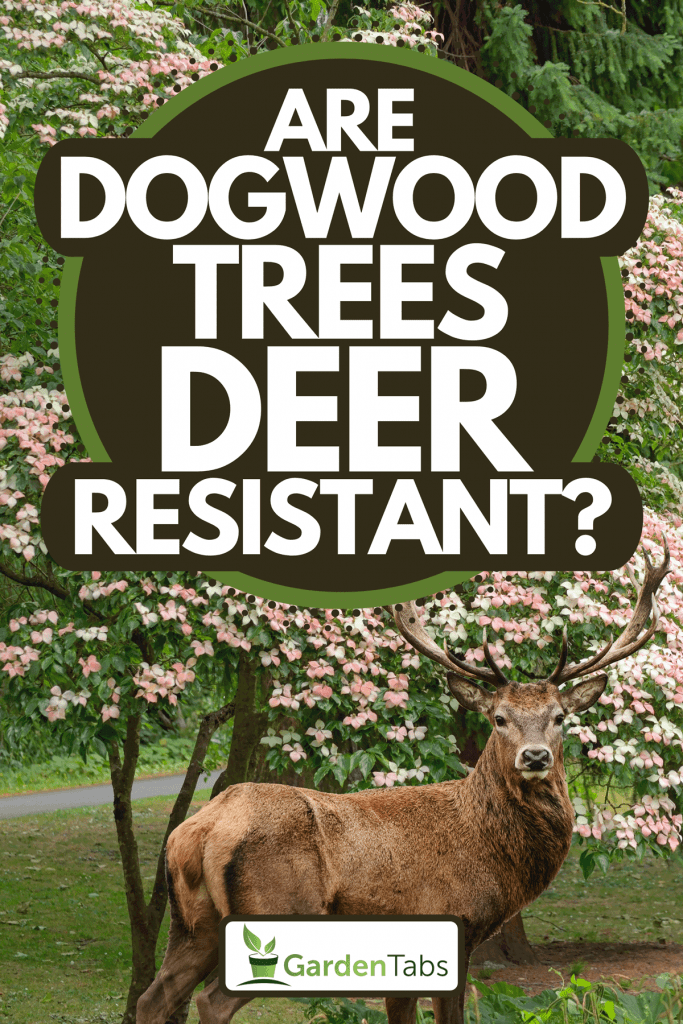
Are Dogwood Deer Proof?
The short answer is no. Almost no landscape plant is deer-proof other than tough cactuses and trees that have grown out of a deer's reach. Dogwood, because of its leafy growth pattern and relatively stocky trunks, is sometimes eaten by deer. Instead, some dogwood varieties are deer resistant.
Which dogwood species are the most deer resistant?
Deer-resistant plants are those plants that deer do not prefer and generally avoid. Sometimes, the deer will still munch on a few dogwood shoots but will not cause significant damage. For deer-resistant dogwood species, significant deer damage is rare. Species of relatively deer-resistant dogwood include Kousa Dogwood, Red Osier Dogwood, and Red Twigged Dogwood.
Read the following subsections to learn more about the deer-resistant types of dogwood. These include the species, their growth patterns, and some tips on the environments they prefer. Read this excellent article for more information about what types of environments dogwoods like, "11 Gorgeous Trees That Like Wet Soil And Shade."
Kousa Dogwood (Cornus kousa)

Kousa dogwood is a short dogwood tree that is a simple deer-resistant landscape addition with beautiful white flowers. It prefers full sun but also tolerates partial shade. When mature, these trees can reach a height of 15-feet to 30-feet tall. Plant Kausa Dogwood in well-drained organic soil for the best growth potential.
Red Osier Dogwood (Cornus sericea)

Red Osier Dogwood is a deer-resistant species of shrub dogwood that reaches 6-feet to 9-feet in height. In addition to white spring flowers, this species features clusters of white berries in summer and fall. This combination attracts both butterflies and a wide range of bird species. In the winter, the red to golden stems of these species add real appeal to a garden landscape.
Red Twigged Dogwood (Cornus alba)
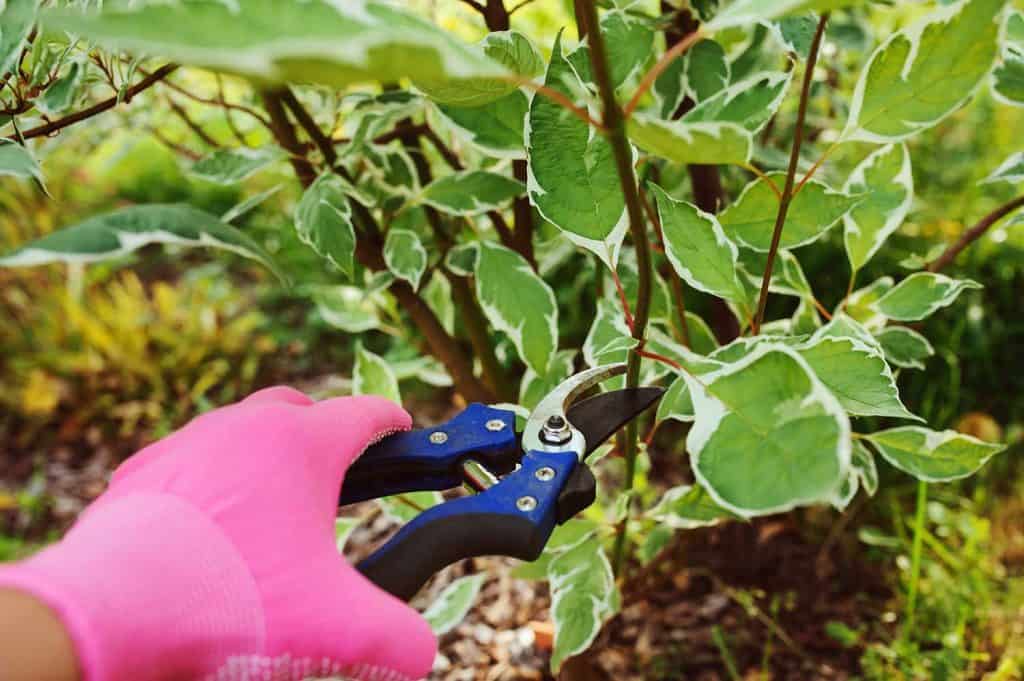
Red Twigged Dogwood is similar to Red Osier Dogwood in its growth pattern, appearance, and preferred soil type. This means it is best when planted in full sun or partial shade. Further, both these red-branched dogwood bushes grow best in well-drained organic-rich soil.
Which dogwood species are the least deer resistant?
The least deer-resistant dogwood species are Alternate-leaved Dogwood, Bloodtwig Dogwood, Flowering Dogwood, and Panicled Dogwood. Expect these species of dogwood to experience severe damage from deer, but only occasionally. This means that even these species of dogwood are more deer-resistant than many landscape and garden plants. The following includes an intro to each listed dogwood species.
Alternate-Leaved Dogwood (Cornus alternifolia)
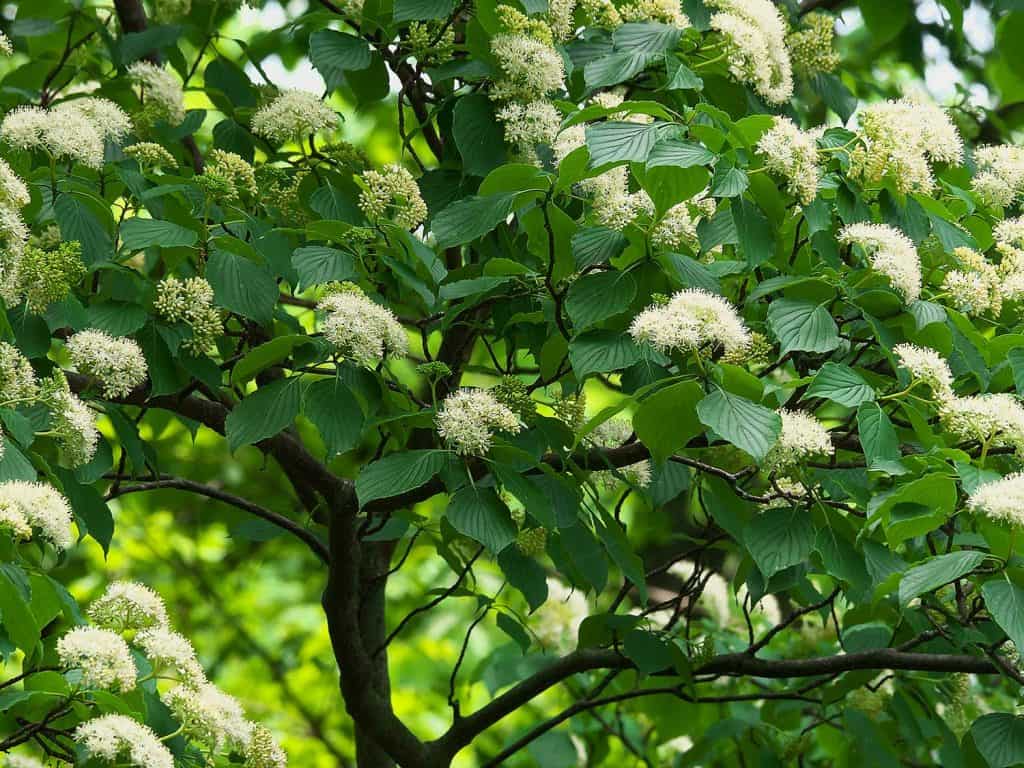
This species of tree dogwood gets its name because the leaves are alternate rather than opposite. The Alternate-leaved Dogwood gets 15-feet to 35-feet tall. It sports cream-white flowers and green to reddish stems. An alternative name is the Pagoda Dogwood, a name it earns because of its horizontal rooflike branch pattern.
Alternate-leaved dogwoods grow best in shade or partial shade. In terms of soil, they prefer well-drained soil but are also tolerant of clay-like soil and other poor soil types. This tree has moderate water requirements.
Bloodtwig Dogwood (Cornus sanguinea)

This bushlike dogwood only grows to a height of about 4-feet tall. However, the orange-hued stems and purple berries more than make up for the lack of stature. A shrub that attracts both butterflies and birds, Bloodtwig Dogwood is particularly stunning when grouped into hedges. Like most dogwood, Bloodtwig prefers full sun and organic-rich, well-drained soil.
Flowering Dogwood (Cornus florida)
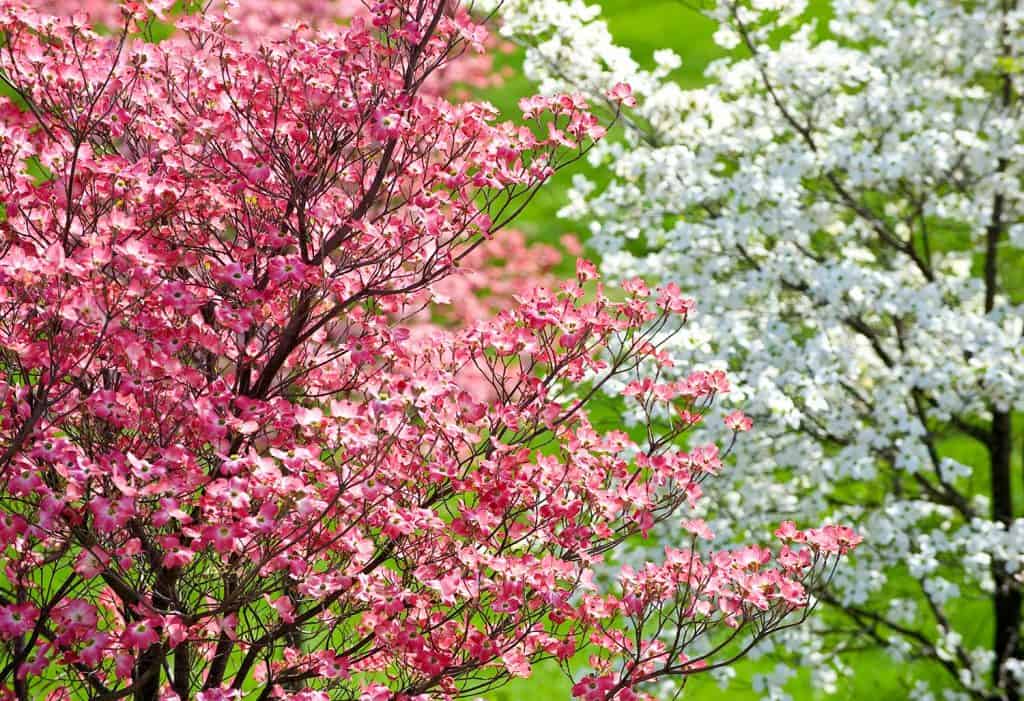
This dogwood tree grows 15-feet to 30-feet tall and prefers partial shade. The white blossoms of this tree turn into orange-red fruit. A variety of this tree species produces pink flowers instead of white. Depending on the source, Flowering Dogwood is sometimes billed as deer-resistant. Of all the dogwood species discussed here, Flowering Dogwood is the most common.
Panicled Dogwood (Cornus racemosa)
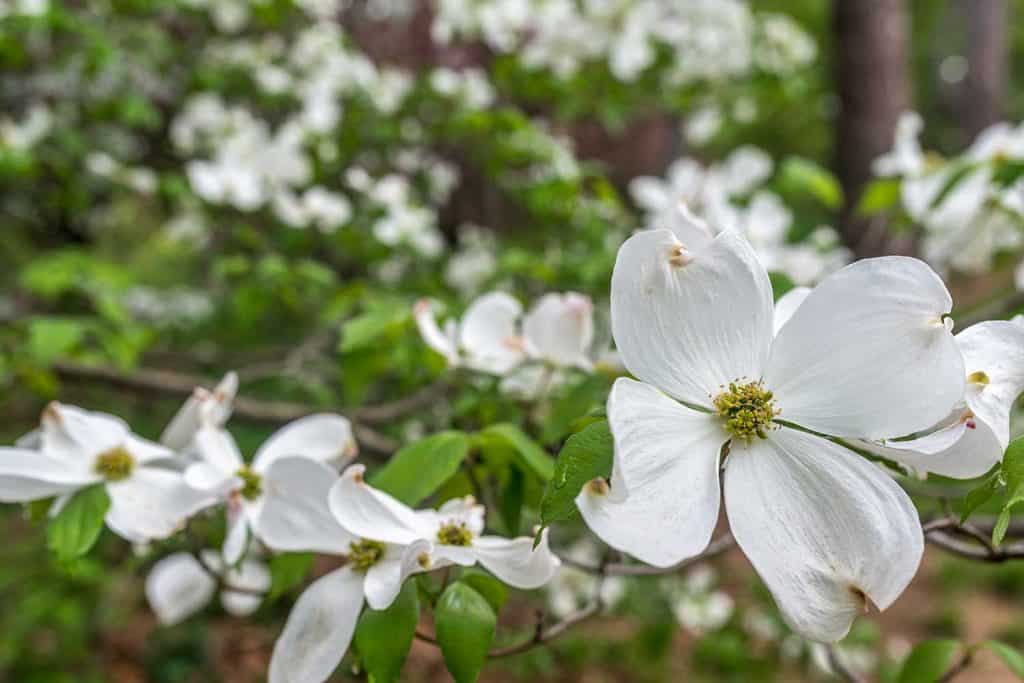
Also known as the Gray Dogwood, the Panicled Dogwood is unique for its blue-green leaves, which can reach a length of 4-inches long. In between a shrub and a tree, this dogwood maxes out at the height of 15-feet tall. Like most dogwoods, the Panicled Dogwood prefers full sun and well-drained soil.
What makes a plant deer resistant?
A plant is deer resistant simply because deer do not prefer the taste or texture of the plant. Sometimes this means large thorns that cut the mouth of the herbivorous deer. More usually, a plant is deer-resistant because deer do not prefer the taste. This means the deer are more likely to eat plants native to the local woodlands.
How do I protect my dogwood from deer?
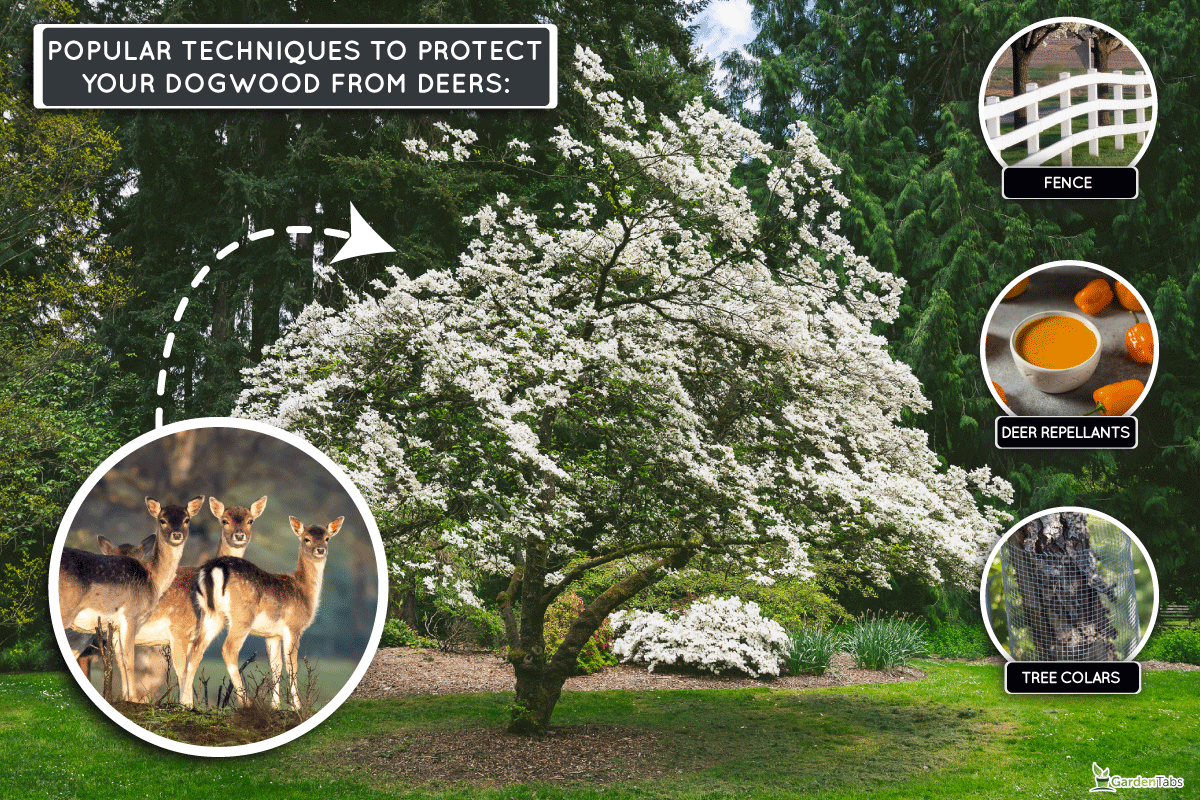
There are several ways to protect dogwood from deer. Popular techniques include fences, deer repellants, and tree collars. Read the following sub-sections for a rundown on each of these methods. No method is 100% effective, so combing methods is a popular strategy.
For more information on how to stop deer from invading your garden, read this great article, "How To Stop Deer From Eating My Flowers? [5 Proven Tactics]."
Fences
Click here for deer fencing available from Amazon.
Fencing in your garden or yard is a tried and true method of protecting your plants from deer. However, deer are excellent jumpers, so the fence must be 8 to 10 feet tall. Take care when constructing the fence because any weakness will be exploited by the deer, which can eventually lead to even greater fence failure.
Deer Repellant
Click here for a deer repellant available from Amazon.
Deer repellant comes in many different forms, including over-the-counter and homemade varieties. Some people even claim that ivory soap makes a great deer repellant. Another homemade solution is to mix about 6% hot habanero sauce with 94% water. Spray this on the leaves to make them distasteful to deer. For over-the-counter deer-repellant, follow the directions on the label.
Tree Collars
Trees and shrubs are the most susceptible to catastrophic deer damage while they are just saplings. A hungry deer can chew the whole tree off in this state, killing it virtually instantly. Slip wide PVC pipe or chicken wire cylinders around the tree to protect it from deer. These collars are designed to be literal physical barriers. Be sure to cut off the collar before the tree or shrub gets too big.
Do deer eat red twig dogwood shrubs?
As stated above, deer do eat red twig dogwood shrubs. However, the most common species referred to by this common name, Cornus alba, is relatively deer resistant. Take note, a wide range of dogwood species with red stems are commonly referred to as red twig dogwood. Do your research on the scientific name of your species to determine its level of deer resistance.
Do deer eat Kousa Dogwood trees?
While deer do eat Kousa Dogwood trees, they do not prefer them. This is why Kousa Dogwood is included in the list of the more resistant dogwood species listed above. However, when you first introduce Kousa Dogwood to the deer in your area, they will likely try it before deciding they do not prefer the taste.
In Closing
In this post, we have answered the question of whether dogwood species are deer-resistant. We expanded on this answer by providing a list and overview of common dogwood species, including their level of deer resistance, growth patterns, and preferred habitats. To close, we answered several related questions. Good luck!



Red Osier Dogwood is sold by food plot hunting groups as a whitetail deer food source and attractant.